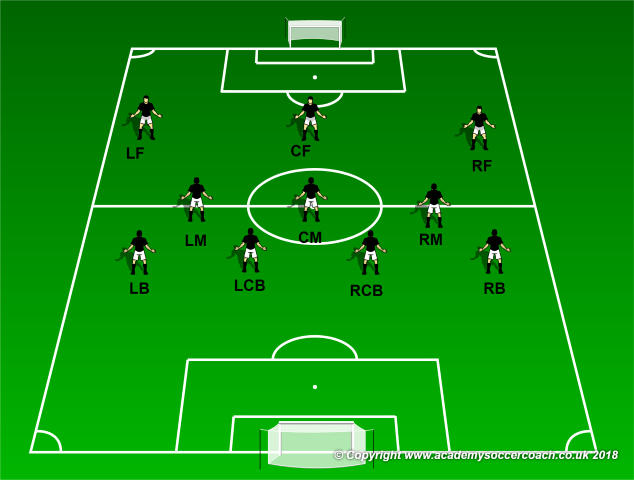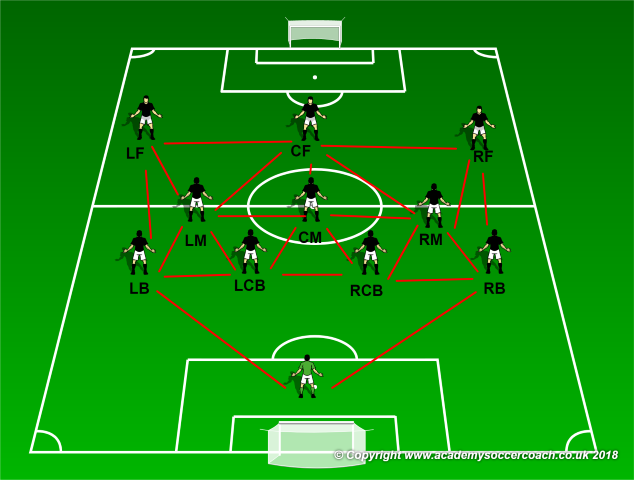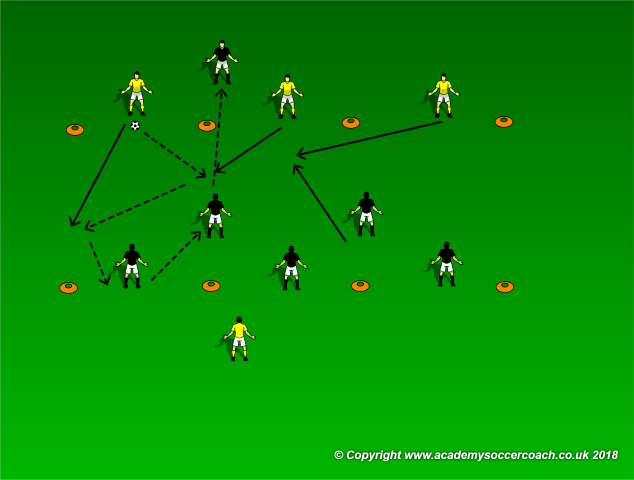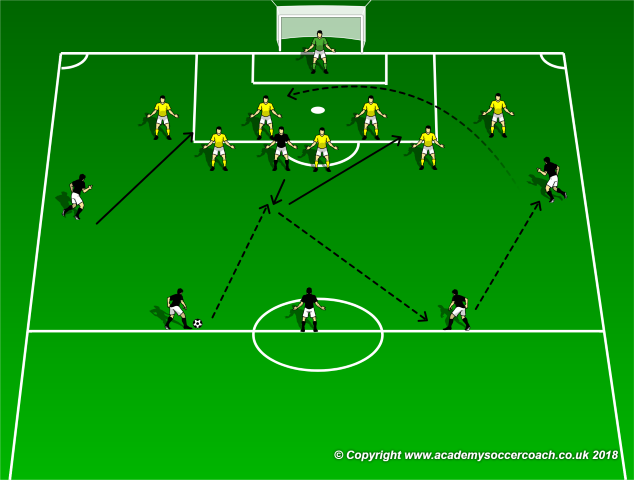By Mike Smith
Question - I’m coaching a u12-u13’s Girls team at a weak Travel level of technical ability. However, they are transitioning from 8v8 to 11v11 and I’m looking for the answer of what formation I should introduce and the training sessions to help me get the players to understand?
In answering the question about the best formation to help youth players transition from 8 v 8 play to 11 v 11 play, another question must be answered: How did they line up when they played 8 v 8: 3-3-1, 2-3-2 or 3-2-2? These are common 8 v 8 formations and each are geared towards adding one more player to the defensive, midfield and forward lines. IF your side played well in one of these, the answer is to just add a player to each line: A 3-3-1 becomes a 4-4-2, a 2-3-2 becomes a 3-4-3 and a 3-2-2 becomes a 4-3-3.
IF however there was no solid formational grounding at the 8 v 8 level, or the previous formation isn’t known, I would break from the traditional 4-4-2 crowd and teach your players a simple, defensively minded 4-3-3. Here is what I mean:

I call this a defensive minded 4-3-3 as the midfielders are more focused on holding in their “gaps” – the spaces between the 4 defenders than attacking while allowing the 3 forward players to combine in the attacking third. By focusing on the group of 7 core players ( which is what you had on the field at 8 v 8 ) they can win the ball, possess, and use the 3 new players as forward targets. Designating a left, center and right forward automatically helps them with positioning. This also creates triangles all over the field ( as shown on the next diagram ).

Setting up this way gives numerous options for possession, good numbers in attack and great balance on defense, with a focus on covering the center. The roles are simple and the spacing ( using a line of 4 in the back with the mid fielders in gaps ) is easy to follow, even during play. ( It’s easy to yell “ quit chasing the ball and get in your gap”. Combinations wide up the line and across the attacking third between the forwards will give plenty of shooting opportunities as well.
Here are a couple drills to help your players grasp this concept:
Set Up
As shown below, set up three 10 x 20 yd rectangles to create 3 sections of play. 5 attackers ( black ) take on 3 defenders inside the grid. Each team has an additional target player behind the grid to score goals with by playing the ball into their feet. In this drill, the defending side starts with the ball in hopes the attacking team will win possession and quickly counter attack. The focus here is holding in the gaps and hitting the forward targets feet quickly. Play starts with each defender in their gap. The first pass is unchallenged and is made to another defender moving into the grid. The attacking team has players in every gap and two additional players inside the grid. The focus is for the players in the “ gaps” to prevent the ball from being played through to the defending teams target player. The defending team may move freely into the grid while the coach should make sure the attacking team uses a bit more discipline. The attacking players in the gaps should look to stop through balls, support their team mates behind them and either hit the open target player or another open player inside the grid when they win the ball. The target players for both teams may move back and forth along the line of the grid.

Progression
On a half field, 6 attackers take on 7 defenders plus the keeper. Play starts with the attacking teams midfielder sending the ball up to the center forward, who checks back into midfield to then distribute to a wide midfielder of forward. Once the ball is wide, it is served across to the opposite side forward who run in to attempt to score. The focus of the attacking team is the midfielders playing to the forwards feet and good services to the far side forward. This movement can unbalance the defending side and expose gaps. Thus, the focus of the defending side is to keep their shape and protect their gaps. IF they win the ball back, including when it is won by the keeper, the defending side should try to get in triangles and possess the ball against the 6 attackers. As soon as the attackers win it back, the defender should tighten up their shape, cover their gaps, and try to stop the attack. This drill works on the positioning and shape of the core 7 as well as the combination play of the 3 forwards and midfielders and is easily related to match play.

Coaching Points
The coach should focus on the back 4 and the 3 mids in their gaps, including getting into triangles for possession and shifting back tight when possession is lost. Once the defending team has it down, focus on how the attacking forwards and mids combine to create scoring chances. This can be repeated over several practices until your players have it all down.
By Mike Smith
Currently the Head Coach for University Heights Academy Boys Soccer in Hopkinsville, KY , Mike is in his 14th year as a high school head coach with 23 years coaching experience overall and 34 year as a student and fan of the game. He holds a USSF D License.


